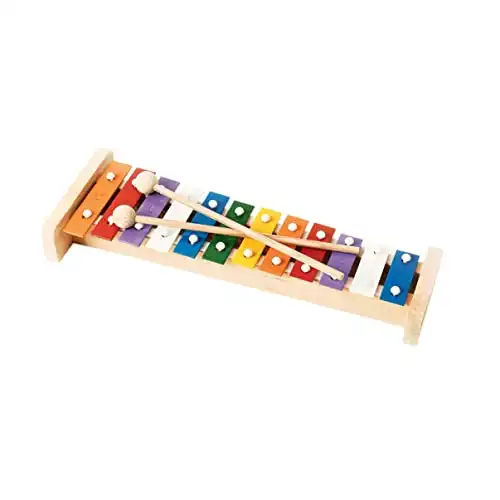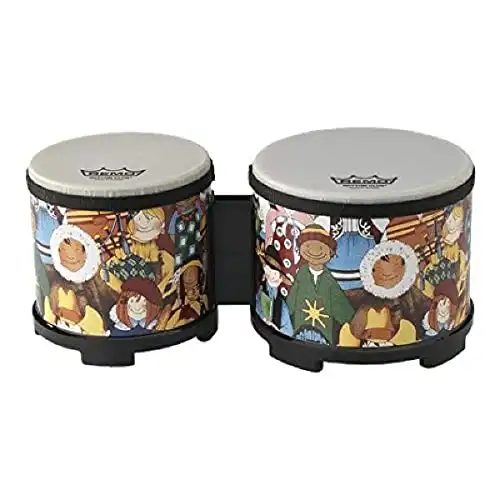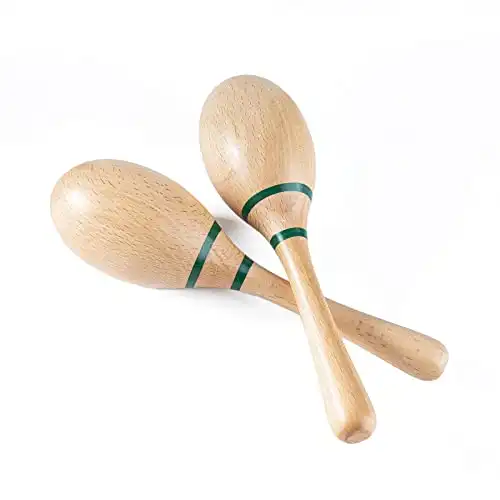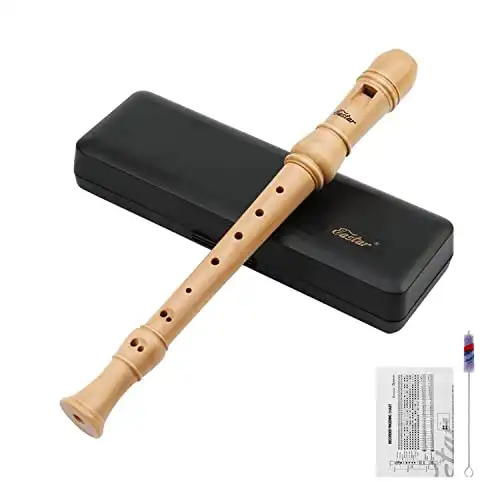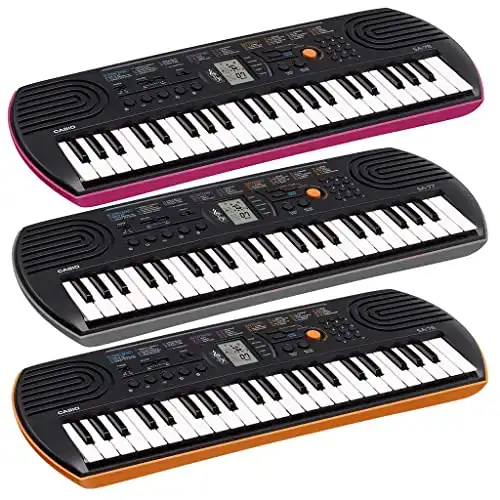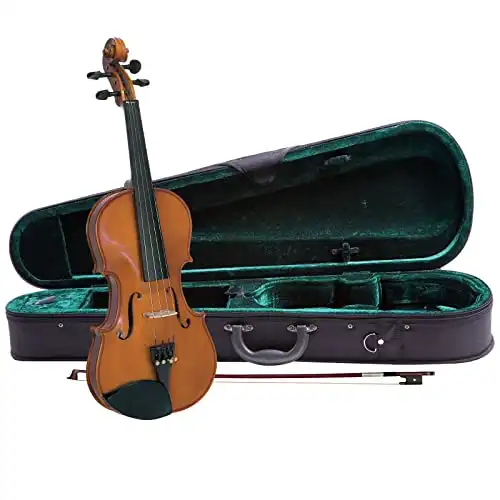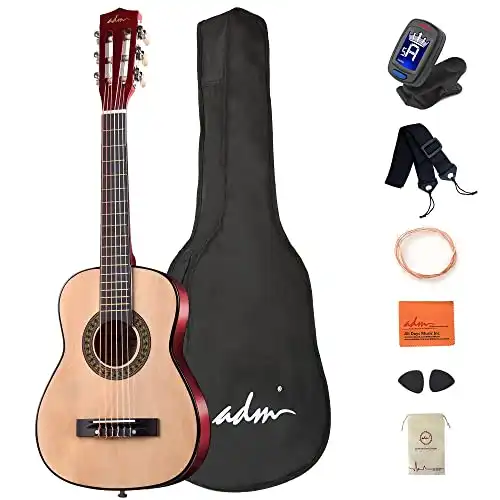Any kind of musical activity is good for kids, and the benefits last well into adulthood. These benefits (explained beautifully in this TED-Ed video) range from improved memory skills to protection from cognitive decline in older age. As well as health benefits, learning to play an instrument teaches kids about practice, perseverance, and the value of hard work – all in a fun way! If they play in a band at school or elsewhere, they’ll also develop valuable teamwork skills. Clearly, it makes sense to encourage your child to play music. So, if you’re wondering what the best starting instruments for kids are, we’ve got you covered.
In this post, we’ll explore the different types of instruments and what instruments are suitable for kids of different ages. We’ll also look at some things to bear in mind when choosing a musical instrument for your child.
What are the different types of musical instruments?
There are six main categories that all musical instruments fit into. It’s helpful to know the basic terms when you’re looking into choosing an instrument for your child, but you don’t need to be an expert. Some instruments, such as the piano, are at home in several categories – so don’t get too hung up on this!
- Percussion: Instruments that produce sound when struck, shaken, scraped, or rubbed. Examples include the triangle, xylophone, tambourine, and all types of drums. The piano can also be classed as a member of the percussion family.
- Strings: Stringed instruments produce sound when the player interacts with the strings, whether with their fingers, a bow, or another tool. Examples include the violin, cello, harp, and yes – the piano.
- Fretted strings: A sub-group of stringed instruments. Fretted instruments have frets – strips of metal or wood that sit across the fingerboard (or ‘fretboard’) as well as strings. Examples include the guitar, ukulele, banjo, and lute.
- Brass: Instruments made of brass tubes that produce sound when the player blows air and vibrates their lips in a certain way. Lengthening or shortening the tube changes the pitch. Examples include the trumpet, trombone, French horn, and tuba.
- Woodwind: Instruments made of any material that produce sound when air moves through them in a certain way. Many use a reed – a thin piece of wood or metal that vibrates as air moves across it. Examples include the flute, clarinet, saxophone, and bassoon.
- Keyboard: Instruments that feature a row of keys that the player presses with their fingers to produce a sound. Examples include the organ, many synthesizers, electronic keyboard and, you guessed it – the piano!
What are the best instruments for young children?
Best instruments for ages 3-5
Kids of preschool age are developing their motor skills and how they interact with the world so the focus should be on playful exploration. The best instruments for kids of this age are those that they can bash, throw, and shake without fear. Simple percussion instruments are best for this age group, as they tend to be easy to handle and fairly sturdy.
Some percussion instruments perfect for small hands include:
- Hand drums
- Xylophone
- Rattle
- Maracas
- Tambourine
Check out a few of our favorite instruments for preschool ages:
Hold up in a heavy use environment
Beautiful kid centric design.
Beech Wood Material
Natural sounds
Great rhythm
Best instruments for ages 6-8
When kids get to around six to eight years old, their skills have developed and they’re better able to focus their attention. That means they can move on to more complex instruments if they want to. It’s vital that they enjoy themselves as they learn, so keep the focus on fun!
Instruments ideal for this 6-8 include:
- Recorder: The classic beginners’ woodwind instrument. Playing the recorder helps develop coordination and breathing skills, as well as finger dexterity. Recorders are cheap and portable and are many kids’ first instruments.
- Piano or keyboard: Perfect for exploring pitch and tone and developing coordination, the piano is great for young learners. Piano skills are useful across all areas of music, and the instrument is extremely versatile. Electronic keyboards are cheaper and more portable than pianos and provide many of the same benefits.
- Violin: For kids with good coordination and a mature attitude, the violin is a good choice. Learning to play the violin takes hard work but is hugely rewarding, and the instrument is very versatile. The small size makes them ideal for children, and bow skills can be transferred to other string instruments.
Classic design
Comes with carrying case, fingering chart, and cleaner
Great intro to piano
Sized for small hands
Headphone output for keeping things quiet 😉
The value over price of this violin is the best in the market
Check out our beginner guide for more violin options
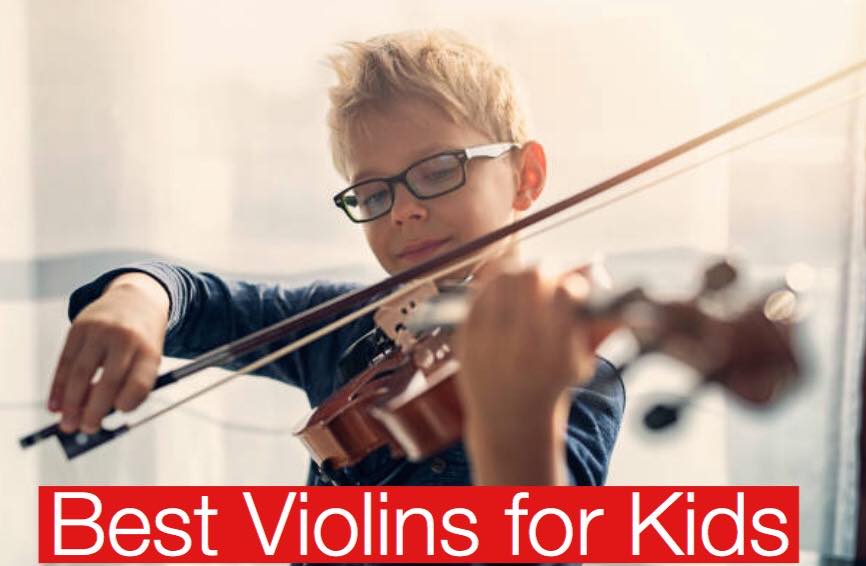
What are the best instruments for older children?
As kids grow in size, their musical options open up. Most children of eight to ten years will have the strength and dexterity to tackle all but the biggest instruments. That said, those we’ve highlighted here are especially good for young learners.
- Clarinet: A step up from the recorder, the clarinet is one of the easiest woodwind instruments to play. Playing the clarinet improves coordination and dexterity, and the skills are transferable across most woodwind instruments. Light and portable, clarinets are popular for groups and as a solo instrument.
- Trumpet: One of the smallest and most versatile members of the brass family, the trumpet is ideal for kids. As with other brass instruments, the skills are transferrable across the family. Trumpets are also light, portable, and popular in many different types of music.
- Guitar: One of the most popular instruments in modern culture, guitars take hard work and perseverance to master. For kids with determination and a genuine love for the instrument, the hard work will pay off. Coordination, dexterity, and finger strength are all important when playing the guitar.
- Drum kit: Once kids can reach the different parts of a drum kit, they’re ready to go! One of the few instruments you play with all your limbs, a drum kit is a great way for kids to expend some energy. Although they can be noisy, electronic kits are available that can be used with headphones.
- Our best beginner guitar
- 30 Inch Size
- Suitable For Children
- 6 String Nylon Guitar
- Comfortable Guitar With Nato Neck
- Maple Bridge and Fingerboard
- Laminated Basswood Back and Sides
- Glossy Finish
- Comes With a Kit
We have a great resource for beginner guitar players
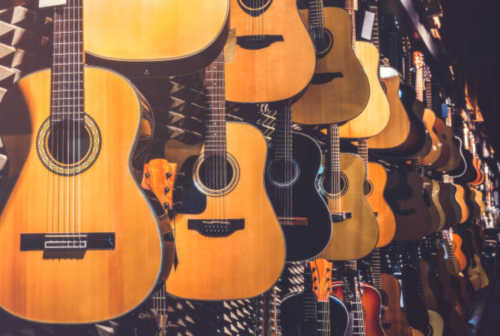
Things to think about when choosing an instrument for your child
There are a few factors to consider when introducing your child to a new musical instrument. The idea is to choose an instrument that your child will enjoy playing for years to come – so it’s worth spending some time getting it right.
- The size of the child: Can your child support the weight of the instrument? Can they reach all the parts that they need to? Are they able to make the necessary mouth or finger movements to produce a sound?
- The child’s personality and interests: As kids get older, their interests develop. It’s vital to take this into account! If your child isn’t enjoying themselves, music will become a chore instead of a pleasure – the opposite of what we want!
- Costs associated with the instrument: Some instruments cost more than others, both to buy and to maintain. It’s crucial to be realistic about this aspect – the good news is, there are plenty of options for every budget.
- Possible transportation issues: Think about how your child will get to lessons, band rehearsals, and events. A trumpet might be a better choice than a tuba for a kid traveling regularly on the bus, for example!
In summary
The sheer number of musical instruments available can be bewildering for parents and caregivers. But if you look at that another way, that variety means there’s an instrument out there to suit every child!
Which musical instrument will be best for your child will depend on several factors. The main thing is that they enjoy it – if they’re excited to play, they’ll keep reaping the benefits throughout their lives.
Written by: Liz Sullivan
